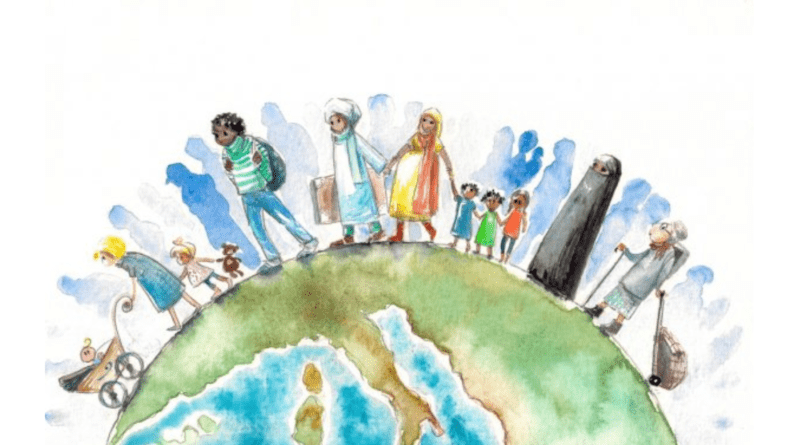Migração e história
It is commonly said and repeated that “all men and women are migrants on the face of the earth, pilgrims until we rest in our definitive homeland”. Or also that “migrations have existed as long as humanity has existed, with its turbulent and tortuous history”. From a certain point of view, both observations are correct. However, they still present anachronistic residues of an almost mythical language. Both, in fact, are permeated with ambiguous traps, which can lead to justifying and even naturalizing mass human displacements. Throughout history, the terrain of migration has been riddled with misunderstandings.
The truth is that there are migrations and migrations. Some prefer to differentiate the concept of migration from the idea of human mobility, as the latter encompasses a broader field in which the former are included. The nomadic movements that preceded the Agricultural Revolution and the prisoners of war taken into exile by the victors, to a greater or lesser extent, are part of all history. The same happens with women taken as trophies or the coming and going of desert tribes and other ecosystems. All of this covers the fabric of history, but in particular the ancient and medieval periods.
The changes in the modern world – philosophical, scientific, technological – especially the Industrial Revolution, combined with commercial and already global trade, the discovery/invasion of new lands and the progress of production and productivity, developed new types of massive human displacements . The most emblematic case is the transformation of the farm servant and/or peasant into a “factory soldier”. Rapid and profound changes, particularly in the 19th century, shook the countries of Europe. With unprecedented speed, the fields emptied and the cities became swollen. To give you an idea, just cite one figure: between 1820 and 1920, approximately 70 million people left the old continent, crossing the Atlantic Ocean, “ per far l’America ”, as the Italians said.
This new and precise type of migratory phenomenon has little or nothing to do with those movements that marked previous societies, as we have seen. This time, these are migrations directly or indirectly linked to salaried work. The “servant” of the plot, subjugated as a vassal and personally linked to the “lord”, on the one hand, and, on the other, the “apprentice” of the workshop linked to the “master” artisan, becomes the impersonal and anonymous worker, the which, in the increasingly complex gear of the incipient factory, starts to earn its salary in money. The various changes that led to the transition from feudal society to the capitalist mode of production equally and profoundly changed relations in the sphere of work. From now on, the work/migration binomial will go hand in hand.
This results, in national and international terms, in the formation of a gigantic “reserve army”, a workforce willing to move according to the winds (read investments) of capital, or with the crumbs that fall from the table of the owners of the land and the means of production. A large part of displacements, both internally, regionally and internationally, occur for reasons linked to the lack of work, in the places of origin, and the search for a job to survive, in the places of destination. Hence, temporarily or permanently, thousands and millions of workers begin to migrate according to the demand for work. Obviously, the larger this “reserve army” will be, the lower the salary level will be. On the other hand, just like the products that come from the worker’s hands and sweat, labor power also becomes a commodity and, as such, subject to the game of buying and selling. The blind laws of the market direct the steps of migrants, leaving little room for maneuver for personal or family decisions. As merchandise, the multitude of those without roots, without a homeland and without direction are compulsorily subject to movement from one place to another. In a similar movement in search of work and bread, temporary stages often pave the way for definitive migration.
We cannot ignore, furthermore, the vulnerable situation of refugees (fleeing conflicts, wars, violence), estimated today at more than 100 million people, as well as climate refugees, whose number grows in direct proportion to global warming, with its catastrophes. And more seriously, trafficking in people and human organs. Nor can we ignore those who move for professional and study reasons, such as technicians, seafarers, truck drivers, students, airline workers, missionaries, tourists, among others.
Father Alfredo J. Gonçalves, cs, SPM advisor – São Paulo, 12/11/2023





